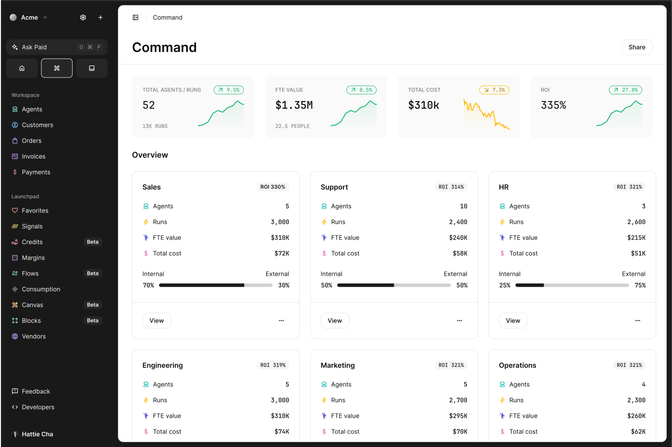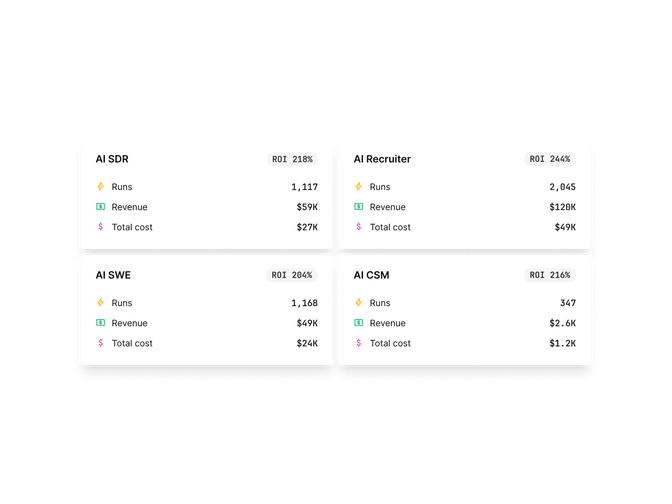Insights straight to your inbox
Join 10,000+ subscribers getting the latest insights on AI monetization.


As agents take over the discussions, one challenge remains consistent for the businesses building them: how do you effectively monetize agent solutions?
At the core of this shift? Signals.
Signals are a powerful concept that's transforming how AI agent companies measure, demonstrate, and bill for value.
Signals are (usually) discrete, measurable events that occur when an AI agent performs a meaningful action or reaches a significant milestone.
In the Paid platform, signals are events that come in when an agent has performed a unit of work.
Think of signals as digital stamps (or breadcrumbs!) that mark each valuable action your AI agent takes.
A signal gets generated whenever an agent:
Each signal captures rich metadata:

Signals aren't just a technical feature, they’re a business innovation at Paid.
There are 5 key reasons why we’re building them into our core:
With signals, you can price and more importantly bill based on:
The workflow image above shows how each step in a content creation process becomes a billable unit, with distinct pricing tied to the specific value delivered.
In a world of AI black boxes, signals create trust. Your customers see exactly what they're paying for.
You can show the actual work performed rather than vague summaries and entitlements.
Signals let you connect pricing directly to business outcomes that matter.
Each meaningful action becomes a distinct signal. In the medical receptionist example above - from appointment scheduling to preventing no-shows.
This creates multiple potential monetization points that your customers would care about.
Signal data provide insights:
As your AI capabilities grow, your pricing can evolve without rebuilding your entire infrastructure.
Pricing an outcome at $1 that delivers $2 of human-equivalent value creates an obvious win for customers while maintaining healthy margins for you.

Signals vary across different types of AI agent applications.
I thought I’d give some practical examples of signals to monetize:
Practically, here are things you can do now:
The question isn't whether to implement signals-based agent monetization, but how quickly you can make them the backbone of your AI business strategy.
Join 10,000+ subscribers getting the latest insights on AI monetization.



Price smarter. Protect margins. Grow revenue.